Hair Transplant in Istanbul
A hair transplant is a proven method to correct sparse hair and bald spots. Hair transplantation can usually be performed in one to two days, the result is permanent and looks natural.
Who wouldn’t want to see a beautiful city and combine it with a hair transplant at the same time?
Lerra Clinic will arrange the entire trip for you to get the best hair transplant procedure in Turkey.
Table of Contents
What Is a Hair Transplant?
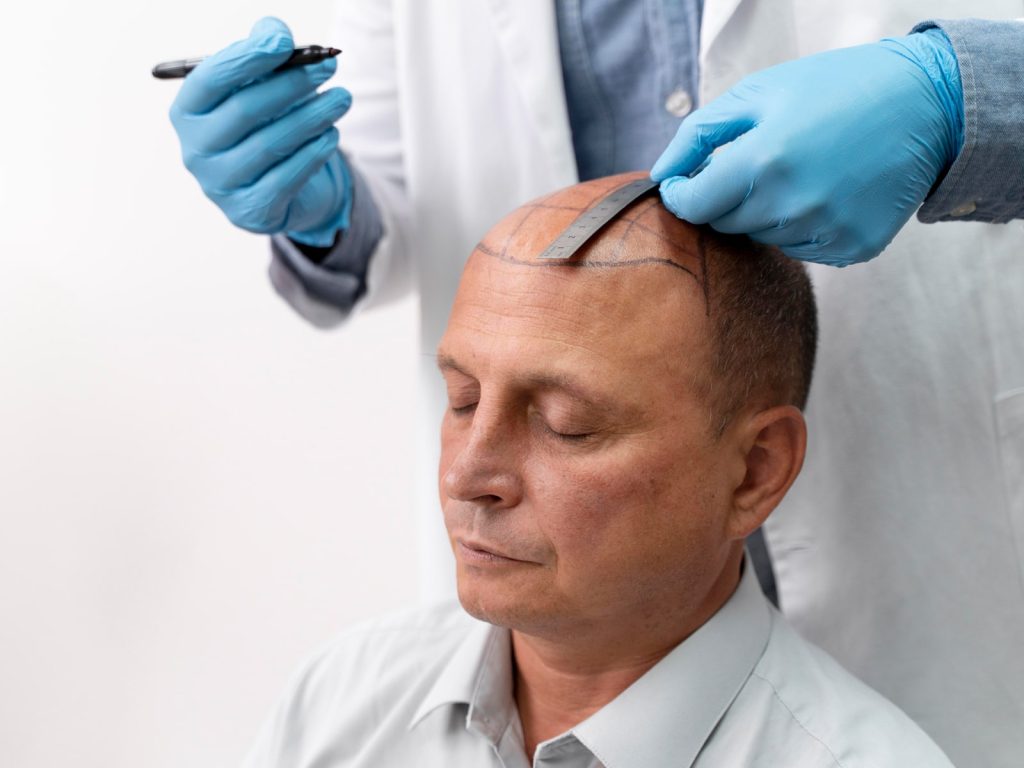
A hair transplant is also called hair restoration or hair implant and is a cosmetic procedure. With a hair transplant, groups of hair follicles are redistributed from a donor area (usually the back of the head) to the area to be transplanted. The healthy hair follicles are transplanted as “grafts”, each containing one to four hairs. For example, a 2,000-graft procedure may contain approximately 4,000 individual hairs.
With a hair transplant, it is your hair that continues to grow in a different place. Because the hairs that grow in the hair follicle (the back of the head) are immune to hair loss, they continue to produce hair in their new place for life. When the treatment is completed, the transplanted hair will be virtually indistinguishable from your original hair. This of course depends on the donor site and the type of hair that comes from there.
A hair transplant has been a proven and reliable method for years to permanently restore an area where hair has fallen out. You will decide together with your doctor which method is most suitable for you. The hair transplant procedure is also not scar-free: You are left with small dots where the hairs have been removed. But when your shaved hair grows back, those spots will no longer be visible, even if you keep your hair short. The most effective option to restore your hair may be a hair transplant at Lerra Clinic. Rest assured, the hair follicle is immune to baldness. That’s the secret behind lifelong hair.
What are the Advantages of Hair Transplantation?

- You remove concerns you feel due to (hereditary) hair loss.
- You no longer have to struggle with your hairstyle or camouflage hair loss every day.
- You have freedom of choice in your hairstyle again, just like before.
- You regain confidence, which makes you feel better and dare to do more.
- You can also get rid of small imperfections (scars) or lower a slightly high hairline so that it bothers you less when you look in the mirror.
It is good to know that a hair transplant is possible for both men and women.
Also interesting: we see that the positive feelings after a hair transplant extend to the entire lifestyle. We hear from many patients that they have started living healthier after a hair transplant. They exercise more and pay more attention to their diet. This shows that self-confidence brings out the best in yourself.
Who is a Suitable Candidate for a Hair Transplant in Turkey?
People with male pattern baldness (androgenetic alopecia) are good candidates for hair transplantation.
Women may also be candidates, but their hair loss patterns often differ from men’s. A free consultation with our qualified hair transplant surgeon can help determine whether you’re a suitable candidate or not.
Types Of Hair Transplant Procedures at Lerra Clinic
There are different types of hair transplants. However, they are all derivatives of two main techniques: the FUE and FUT techniques. The difference between the two hair transplant techniques is mainly in the way in which the hair follicles are removed from the donor area.
FUE Method
The FUE treatment is a form of hair transplant for hair loss and sparse hair areas. FUE stands for Follicular Unit Extraction. It is a commonly used technique in Turkey.

How Does The FUE Hair Transplant Work?
With a FUE treatment, hair follicles from the back of your head are moved one by one to areas where there is hair loss. Hair at the back of your head is insensitive to the hormone DHT. DHT causes hereditary hair loss. That is why these hairs will never fall out later in less hairy places.
The hair follicles are removed with a thin, hollow needle. The technique in which the thin needle removes the hair follicles is called punching. During punching, very small scars are created that are barely visible. Before the hairs are placed back on the head, they are divided into small groups called grafts. Your head is also often shaved to avoid damaging the grafts to be implemented. Small skin channels are then made in a less hairy area. This is done with a needle. The doctor places the hair groups one by one into the skin channels.
The result of a FUE hair transplant is permanent, but only optimal after about a year. Hair grows naturally and takes time. You will see progress in the period after the treatment.
FUT Method
The FUT treatment is a form of hair transplant for sparse hair areas and hair loss. FUT stands for Follicle Unit Transplant. It is a well-known technique all over the world.
How Does The FUT Hair Transplant Work?
At the start of the FUT treatment, the doctor removes a strip of skin at the back of your head, also known as the donor area. This part of your scalp contains hairs that are insensitive to the hormone DHT. DHT causes hereditary hair loss. After removing the strip, the scalp is sutured, creating a scar. How large and visible the scar will depend, among other things, on the size of the strip.
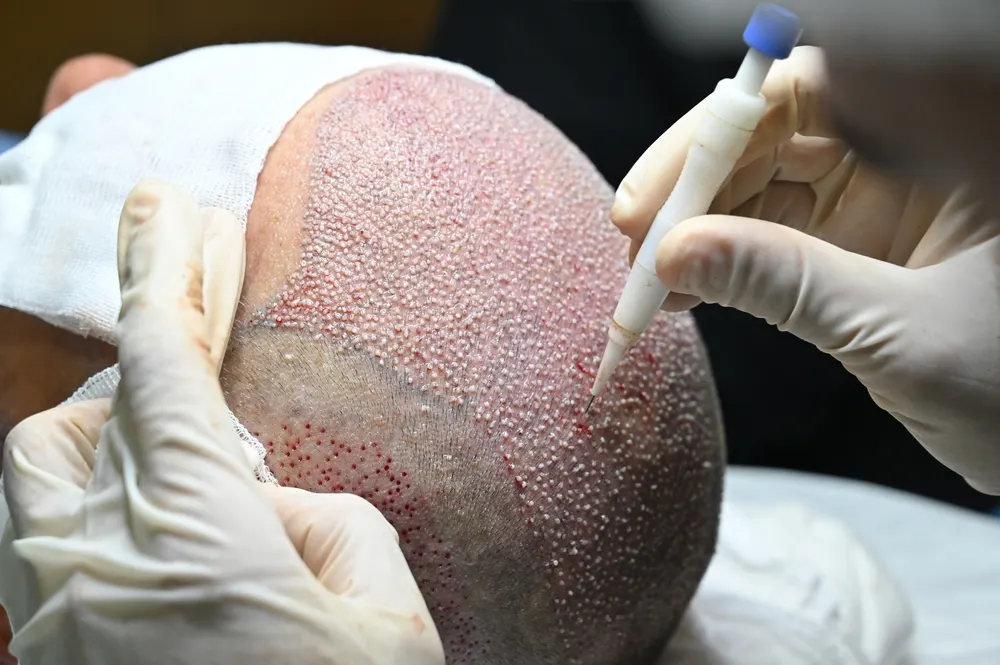
The hair specialists create hair groups from the strip, consisting of one to four hairs. These hair groups are also called grafts. At the same time, small incisions are made in the less hairy areas. The hair specialists then place the grafts one by one into these indentations.
During the FUT hair transplant, you will be partially anesthetized. This means you will feel little to no pain during the treatment. After the hair transplant, you may feel pain for a few days.
The result is permanent, but only optimal after about a year. Hair grows naturally and takes time. You will see progress in the period after the treatment.
FUE Sapphire and DHI method
Our doctors work with the FUE method. The FUE method is the most comfortable, advanced, and widely used method in the world. Under local anesthesia, the donor hairs are removed one by one with a thin punch (0.6-0.7 mm) and implanted on the balding areas. A major advantage of this technique is that you are left with no scars.
For a good and beautiful result, not only the number of grafts is important, but also the natural result. For a natural hair transplant result, the direction and angle when opening the channels and implanting the hairs must be carefully estimated. The experience and expertise of the doctor is very important.
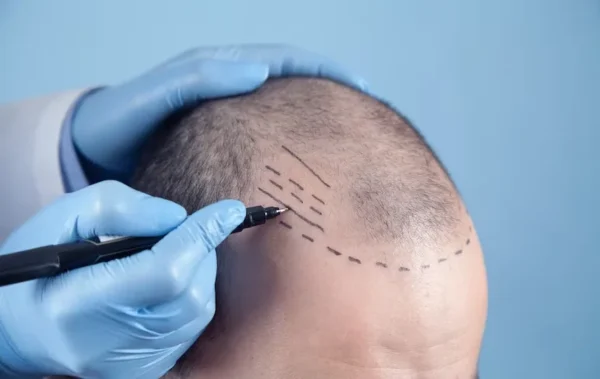
We use two techniques for replacing the grafts. Micro FUE sapphire technique and the DHI technique. We look at each person to determine which technique is best for optimal results.
Advantages of FUE method:
- Virtually painless
- No scars
- Faster recovery
- Natural results
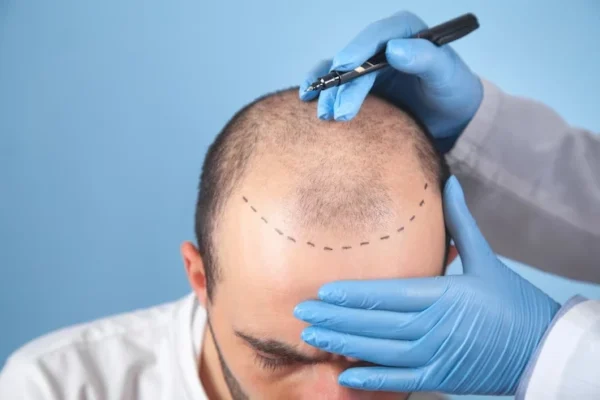
Micro FUE technology (Standard with sapphire)
The steps of the hair transplantation:
1) Collecting the donor hairs
2) Collect, prepare, and count the grafts
3) Creating new channels to implant the hairs
4) Implanting the hairs into the opened canals
DHI technique
The steps of the hair transplantation:
1) Collecting the donor hairs
2) Collect, prepare, and count the grafts
3) Implanting the grafts with a CHOI pen.
4) PRP treatment
Pros and Cons of Hair Transplant Procedure
Pros of Hair Transplants
- If the hair is transplanted properly, it will continue to grow in the new place for the rest of your life.
- Very little preparation is required.
- Hair transplants can look very natural if done properly.
- Most patients no longer need painkillers afterward, especially with the FUE technique.
Cons of Hair Transplants
- A hair transplant does not stop the progression of hair loss on the scalp. It may be that interventions are still required in other places.

- If a hair transplant is not performed properly, the surrounding hair can be damaged.
- Not all transplanted hairs will survive.
- Depending on the type of hair transplant, you may be left with minor scars.
- A hair transplant is an expensive procedure that is usually not covered by insurance.
- The donor area may become exhausted or too small, meaning that only part of the total area can be treated.

FUT Method
The FUT treatment is a form of hair transplant for sparse hair areas and hair loss. FUT stands for Follicle Unit Transplant. It is a well-known technique all over the world.
How Does The FUT Hair Transplant Work?
At the start of the FUT treatment, the doctor removes a strip of skin at the back of your head, also known as the donor area. This part of your scalp contains hairs that are insensitive to the hormone DHT. DHT causes hereditary hair loss. After removing the strip, the scalp is sutured, creating a scar. How large and visible the scar will depend, among other things, on the size of the strip.
The hair specialists create hair groups from the strip, consisting of one to four hairs. These hair groups are also called grafts. At the same time, small incisions are made in the less hairy areas. The hair specialists then place the grafts one by one into these indentations.
During the FUT hair transplant, you will be partially anesthetized. This means you will feel little to no pain during the treatment. After the hair transplant, you may feel pain for a few days.
The result is permanent, but only optimal after about a year. Hair grows naturally and takes time. You will see progress in the period after the treatment.
What To Expect During The Hair Transplant Consultation at Lerra Clinic?
Before you undergo a hair transplant in Turkey, you have to consult a hair transplant clinic one or more times. By attending a consultation, you can gain more clarity about the treatment, the costs, and the expected results.
Various matters are discussed during Lerra Clinic’s free consultation. You will be asked in advance to think carefully about your aspirations. Which areas do you want to have treated? What hair density do you want to achieve? By discussing such aspirations with our doctor, an appropriate treatment can be chosen, and an image can be sketched of the results you can expect.
In addition, during our hair transplant consultation, your medical history will be discussed, your details will be noted, and you will receive a hair transplant quote.
Before and After The Operation
What should you pay attention to before a hair transplant?
Stop taking blood-thinning medications, such as aspirin, painkillers for rheumatism, etc., one week in advance of your hair transplant.
Are you taking medication for your heart and/or blood vessels, diabetes, blood pressure, etc.? Consult with your doctor before starting treatment.
Do not shave or cut your hair
Day of hair transplant procedure:
- No alcohol or cigarettes
- No gel, wax, or other hair products
- Have a hearty breakfast or a good meal before the treatment
- You may keep your clothes on during the treatment. A blouse is recommended because it can be easily put on and taken off without touching your head.
First 3 days:The implanted areas mustn’t be touched for the first two days.
For the first 4 nights, you must lie higher than normal. You can use this as support. You can lie on the donor area, that is no problem.
You don’t have to do anything to your scalp on the first day. There is a bandage over the donor area, which you can remove the next day and rinse thoroughly.
You may only wash your reception area after the second day with the special shampoo we provide you with.
Use the medications as directed by the doctor.
Some people have mild swelling around the eyes and face (edema). This will go away within a few days.
You can resume your sports activities after 10 days.
Washing the Hair:
- You can wash your scalp on the second day after the treatment with the special lotion/shampoo that we provide you with.
- Washing is done to clean the scalp and rid it of crusts and blood clots.
- During the first week, try not to wash your scalp under a hard shower jet, but with a soft jet or rinse with a bowl of lukewarm water. It is important that you do not damage the implanted hairs.
- Use lukewarm water and not too hot or cold.
- You may wash your hair once a day.
- On the 10th day, you may gently massage the implanted areas while washing. This ensures that the scabs will be removed faster.
- After the 10th day, you can increase the intensity of the massage every day. This will not cause any damage to your implanted grafts, as they are already attached to the skin.
- The scabs will have disappeared by the 10th or 11th day. If there is still a scab that does not disappear, give it time because it will fall off on its own. Do not pull or scrape away.
- You can wash and massage the donor area vigorously from the 1st day of washing. This is no problem at all. You may also use a soothing lotion on the donor area. PLEASE NOTE: Only the donor area where the grafts were removed and NOT the area where the hairs were implanted.
After the 10th day:
You can wash your hair with all shampoos. Our advice is to wash your hair with a shampoo with a low PH value for the first 6 months. Ask us for advice.
During the first month, you must protect yourself from hot sunlight. It is also recommended not to use the sauna or expose yourself to extreme heat.
After your 10-day recovery, you may wear a cap or hat, as long as it is not too tight.
Long-term:
- After 2–3 weeks, the transplanted hairs will gradually fall out. This is very normal and part of the process.
- The implanted hairs are in a kind of resting phase (telogen phase). After 3–4 months, the hair will start growing from the root and will no longer fall out. Every month, your hair will grow about 1 cm.
- The first hairs that grow will look thin, weak, and curly. As the hair grows, it will become thicker and take on its shape.
- You may still experience itching after 2 months. This is normal and will go away on its own after a while.
- You should not use clippers on the implanted areas for up to 40 days. After 10 days, it is permitted to use clippers on the donor area.
- After 1 year and sometimes 1.5 years, you will see the final result of your hair transplant.
- If you need a 2nd session, this is possible from the 7th month. This depends on the recovery of your donor area.
Growing process:
Hair growth is different for everyone. For some men and women, results can be seen after 6 months, and for others only after 12 months or sometimes even 18 months.
Thin scabs develop between the 5th and 11th day after the hair transplant. These disappear automatically. Most implanted hairs fall out in the second and third week after the hair transplant. This is a natural process. The hairs in the implanted hair roots are weakened due to a low supply of oxygen and nutrients. The hair roots enter a kind of resting phase and after about 3-6 months new and strong hair will grow again.
In some cases, the donor hair and the hair next to it may also fall out. It also grows back after a period of hair loss. This is called shock loss and occurs in less than 5% of patients. This is almost always temporary and is probably caused by the stress before surgery.
The hair is very thin and weak in the first months but becomes thicker and firmer. The result is clearly visible after about 1 year.
Why Choose Lerra Clinic for Hair Transplantation in Turkey?
Lerra Clinic stands out for several reasons:
- Our team of top surgeons in Turkey has extensive experience in hair transplant procedures.
- We maintain modern, well-equipped facilities to ensure patient safety and comfort.
- Patient satisfaction and well-being are our top priorities.
- From consultation to recovery, we provide comprehensive care and support.
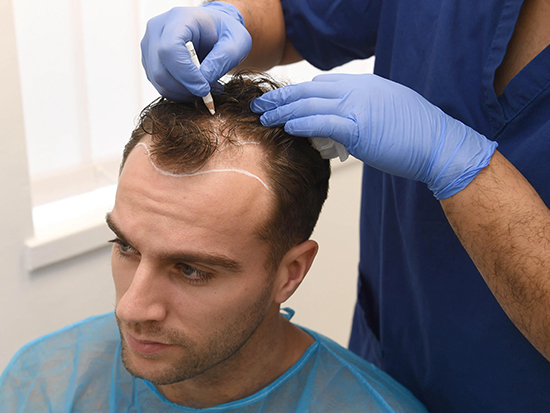
How Much Does a Hair Transplant Cost in Turkey?
The prices of a hair transplant are based on what your hair currently looks like. The more hair that needs to be moved, the longer a treatment takes, and the more expensive it becomes.
The technique used will affect the cost of a hair transplant in Turkey, but the hospital’s location and the medical equipment will have the biggest impact. At Lerra Clinic, we strive to provide you with the best hair transplant price in Turkey by balancing competitive pricing with adherence to the highest standards of quality.
The price for a hair transplant procedure in Turkey as determined in this manner includes all professional and material fees (operating room, anesthesiologist, surgeon, medical and paramedical staff fees, materials, etc.), post-operative medical devices, hospitalization in a day hospital, or overnight accommodation (if the surgeon arranges for it). The pre-operative consultation with the anesthetist, the constant and simultaneous presence of the anesthetist (equipped with the most up-to-date monitoring and intervention tools), the assistant surgeon, and the plastic surgeon in the operating room during the procedure, the team’s availability for the first 24 hours, and the post-surgery check-ups are all always included as well.
The services provided by Lerra Clinic have been created to provide the highest standards of quality and safety for clients seeking hair transplants in Turkey. When determining the cost of your hair transplant in Turkey, ask yourself if the suggested cost is worth your safety. Don’t undervalue the significance of relying on qualified facilities, doctors, and organizations, capable of managing any unexpected incident.
You can learn the most precise and accurate information about hair transplant costs in Turkey through our free consultation and thus have an idea of the price of hair transplant in Turkey.
Contact us today and get the best offer!
Read Also:
Hair Transplant Cost in Turkey 2025
Essential Tips for Your Hairstyle After Hair Transplant
FAQs:
How do I prepare for a hair transplant procedure?
There are some things to take into account before a hair transplant. These are partly personal, and we will of course make this clear to you in time.
Am I suitable for a hair transplant?
That is the first question we answer during a consultation. Not everyone is suitable for a hair transplant. A hair transplant is only possible if the hair ring is of good quality. In addition, the expectations and the size of the recipient area play a major role in a hair transplant.
Is a hair transplant on a scar possible?
Do you have a scar on your head where no hair grows? Then we may be able to transplant hairs here again. In any case, it must be determined in advance what the skin of the scar is like.
Does a hair transplant hurt?
A hair transplant is usually not experienced as painful. The treatment is under local anesthesia. Only the area to be treated is anesthetized.
How long does a hair transplant take?
A hair transplant with our method usually takes eight hours. During these eight hours, all the hairs are removed one by one from the donor area and sorted one by one. The channels are then made into which the hairs are to be implanted, and then the hairs are implanted one by one.
Does a hair transplant really work?
Yes. With a hair transplant, hair from your hair follicle is implanted onto balding areas, which then simply starts growing again. We promise that for life.
How long is the recovery period?
After the hair transplant, we recommend taking a week off. After a week, the scabs are gone and there is virtually nothing left to see.
How should I sleep after a hair transplant?
For the first three days after a hair transplant, we recommend sleeping on your back so that the implanted hairs do not touch the pillow. Make sure your head is elevated so that the swelling can subside.
When can I wash my hair after a hair transplant?
After a hair transplant, you should wait until day 3 after treatment (treatment day is day 0) before wetting the recipient area. From day 3 you can gently wet the area and wash it with a dab. From day 7 you can start washing normally again.
What can I do about pimples that may arise after a hair transplant?
After a hair transplant, pimples may appear on and around the treated area. Just like regular pimples, these are harmless and will disappear on their own. We also advise you to leave it alone, otherwise, scars may form.
